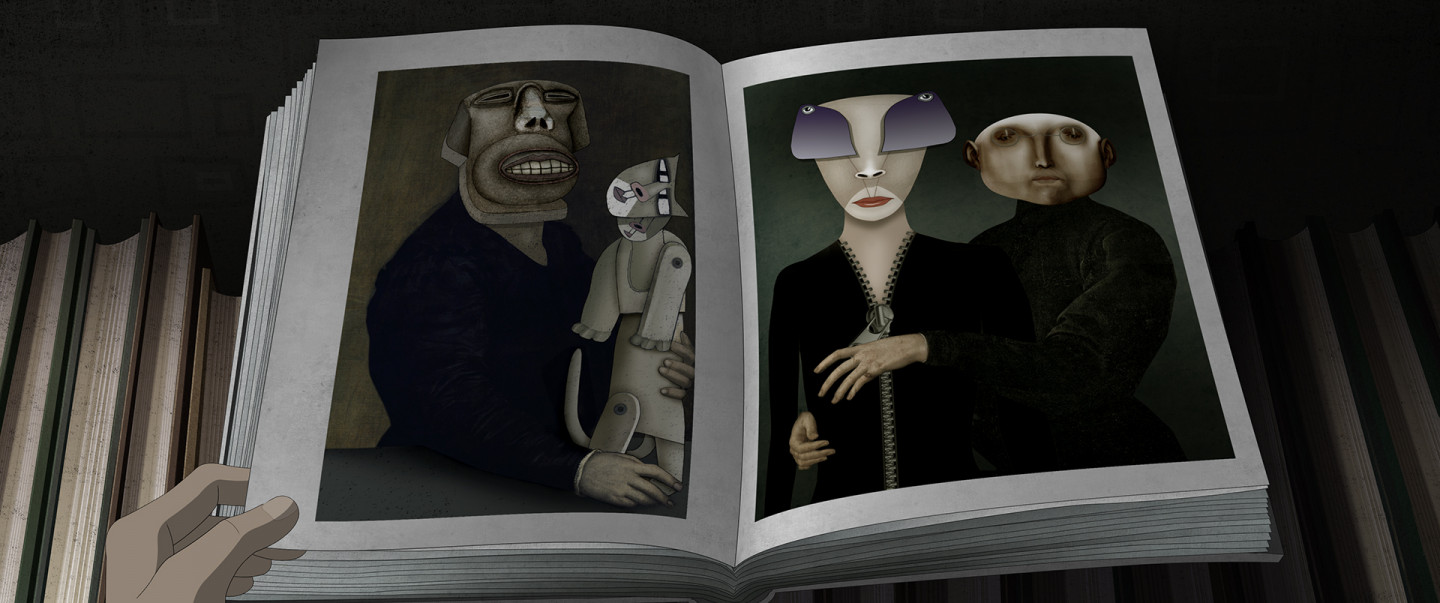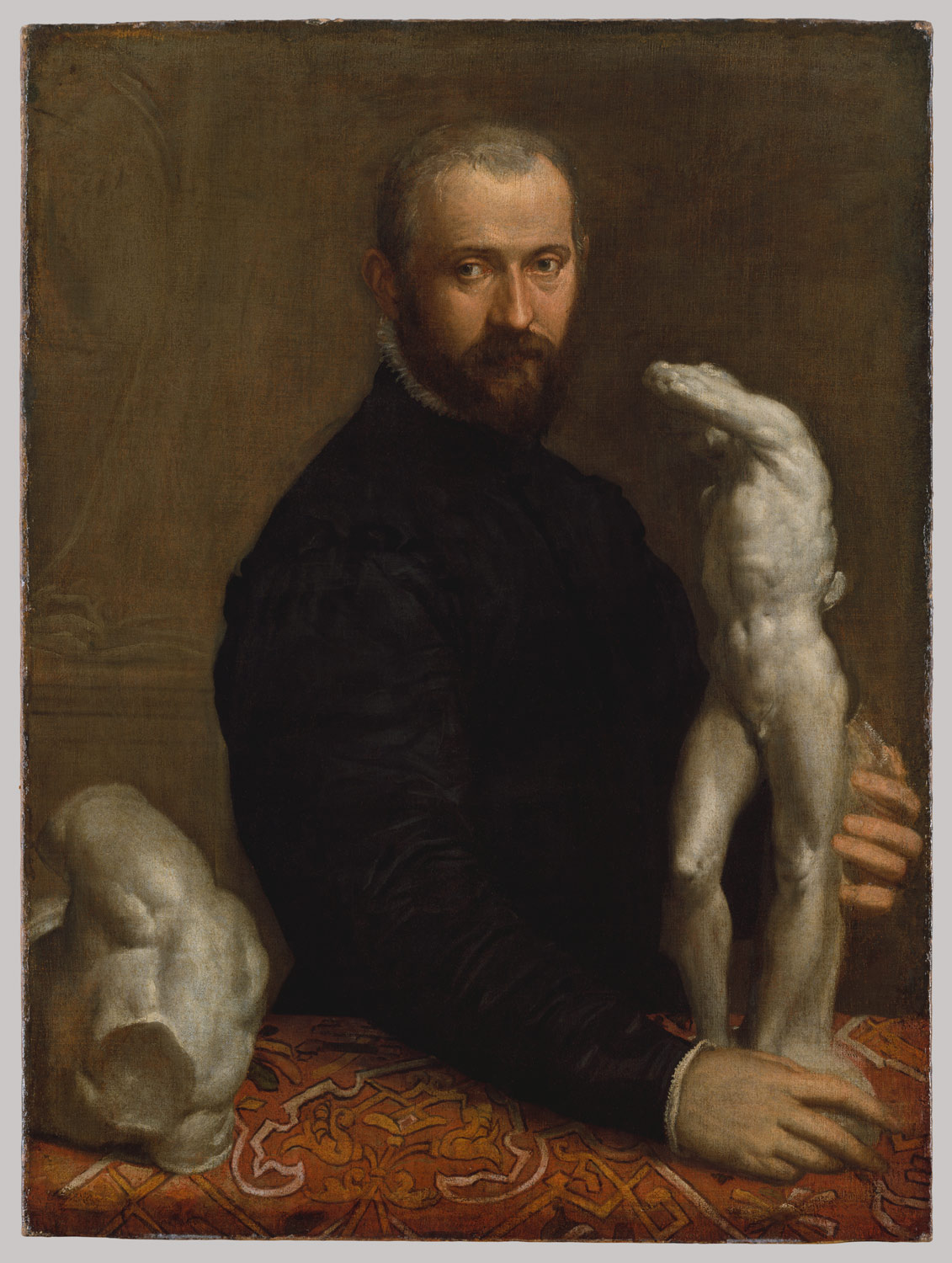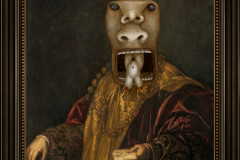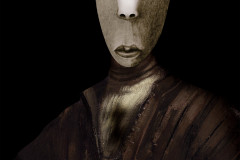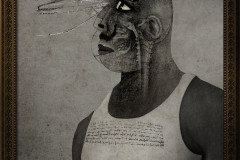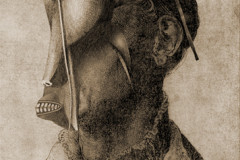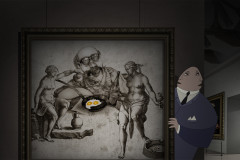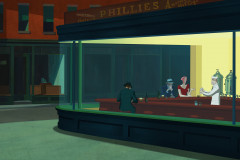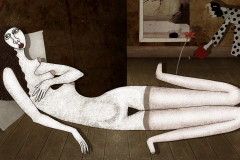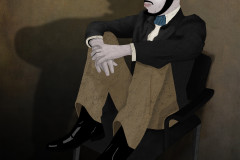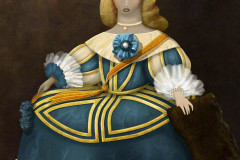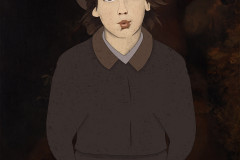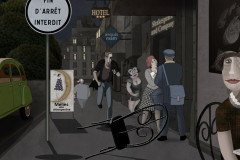Veronese, Paolo (1528-1588): Alessandro Vittoria portréja, 1575 (olaj, vászon, 110 x 77 cm, Metropolitan Museum of Art, New York). A késő reneszánsz egyik legnevesebb velencei festőjének portréja a város vezető szobrászáról. A valóságban New Yorkban, a filmben a párizsi Louvre-ban látható, amikor Mimi a szellőzőn keresztül landol a galériában, hogy megbízását teljesítse.
A portré a XVI. század második felének legtöbbet foglalkoztatott velencei szobrászát, Alessandro Vittoriát ábrázolja, aki leghíresebb alkotásának, a Szt. Sebestyént ábrázoló oltárszobornak modelljét tartja a kezében. Az oszlophoz kötve halálra nyilazott mártírszent alakját gyakran ábrázolták a reneszánszban, ugyanis alkalmat adott a kort olyannyira érdeklő téma, a mezítelen emberi test megjelenítésére. Vittoria több változatban, bronzba öntve is, elkészítette az alkotást, melynek előképe Michelangelo híres rabszolgaszobrainak egyike volt (mely a valóságban is a Louvre-ban található). Veronese portréjén a szobrász egyfajta „mesterségem címereként” tartja maga előtt szobrát, amely a másik, szintén meztelen férfitestet ábrázoló torzóval együtt mintegy keretbe foglalja a sötét ruhás alakot. Az előkelő viselet a művész jómódúságáról árulkodik, akárcsak az a tény, hogy a szobrászról a kor legkiválóbb festőivel megfesttetett négy másik portré is fennmaradt, melyeken szintén alkotásaival együtt látható, s melyek műhelyénél, a látogatók és megrendelők által jól láthatóan voltak elhelyezve, mintegy plakátként hirdetve a művész nagyszerűségét.
Veronese, Paolo (1528–1588): Portrait of Alessandro Vittoria, 1575 (oil on canvas, 110 x 77 cm, Metropolitan Museum of Art, New York). This portrait by one of the foremost painters of the Venetian late Renaissance depicts the city’s most celebrated sculptor, Alessandro Vittoria. While the original is housed in New York, in Ruben Brandt, Collector it appears in the Louvre, just as Mimi drops into the gallery through a ventilation shaft to carry out her mission.
The painting shows Vittoria holding the model of his most renowned work, an altarpiece sculpture of Saint Sebastian. In Renaissance art, the figure of the martyred saint—tied to a post and pierced with arrows—was a popular subject, offering an ideal opportunity to display the nude male form, a major focus of the period. Vittoria created several versions of the piece in bronze, drawing inspiration from Michelangelo’s famous Dying Slave sculpture, which is, fittingly, housed in the Louvre.
In Veronese’s portrait, the sculptor presents the Saint Sebastian model almost like a personal emblem of his craft, while another male torso sculpture to the side complements and frames his dark-clad figure. His elegant clothing speaks to his affluence and high social status—as does the fact that four other portraits of him by major painters are known, each depicting him alongside his own works. These portraits were displayed prominently in his workshop, in full view of clients and visitors, functioning as a kind of visual advertisement for his artistic prowess.






